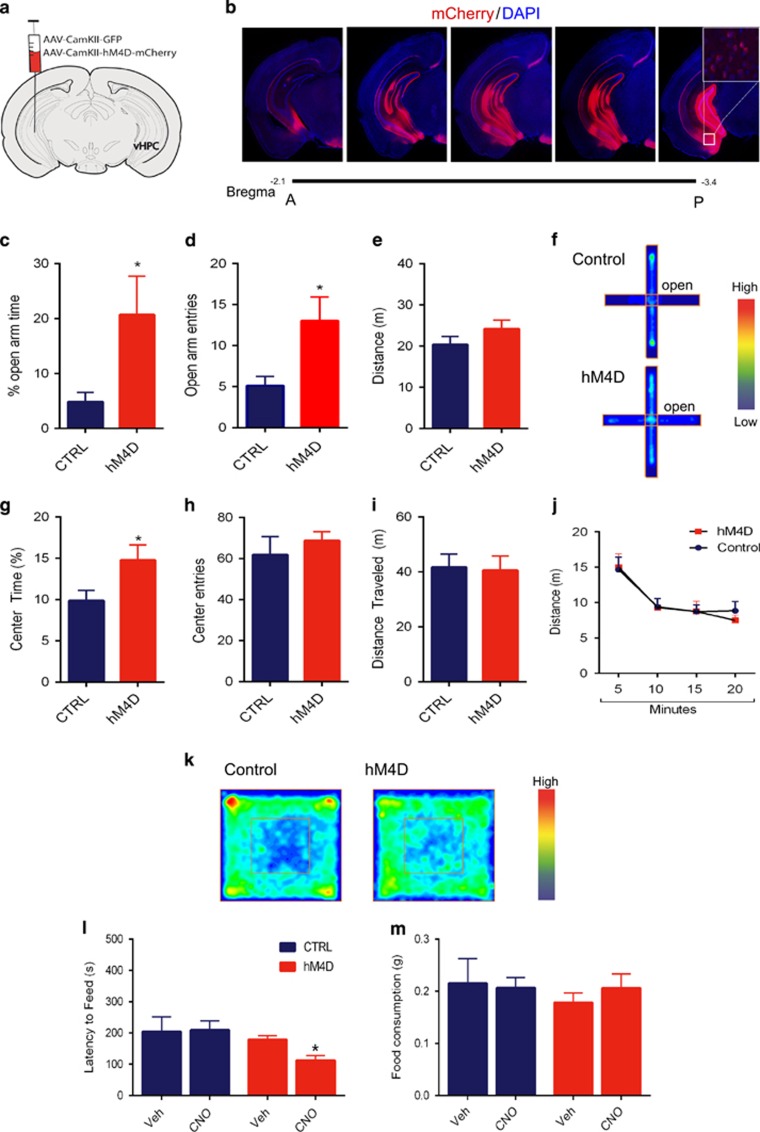Figure 1.
hM4D-mediated inhibition of the vHPC decreases anxiety. (a) AAV8-CaMKIIα-hM4D-mCherry or AAV8-CaMKIIα-GFP (control; CTRL) was injected into the vHPC bilaterally. (b) Representative images from AAV8-CaMKIIα-hM4D-mCherry mice showed hM4D-mCherry expression in the vHPC along the anterior–posterior axis. (c) hM4D mice displayed an increased % open arm time in the EPM test after CNO injection (*p=0.04). (d) hM4D mice displayed increased open arm entries in the EPM test after CNO injection (*p=0.01). (e) CTRL and hM4D mice showed similar levels of locomotor activity measured as a total distance traveled in the EPM after CNO injection. (f) Heat-map plots show the averaged cumulative time spent in different parts of the EPM. red=more time, blue=less time. (g) hM4D-mice displayed an increase in % time spent in the center during the OF test (*p=0.02). (h and i) CTRL and hM4D mice showed similar levels of center entries (h) and locomotor activity (i) in the OF test after CNO injection. (j) Examination of locomotor activity in 5 min intervals revealed no significant differences between hM4D and CTRL mice. (k) Heat-map plots show the averaged cumulative time spent in different parts of the OF. red=more time, blue=less time. n=7 for CTRL and 8 for hM4D mice. (l) CNO decreased the latency to feed in hM4D mice but not in CTRL mice in the NSF test (RM two-way ANOVA shows a significant effect of the treatment F(1, 9)=5.344 *p=0.04, followed by Bonferroni post-test p=0.01). (m) No alteration in the food consumption was observed among the groups after the NSF test. n=6 for CTRL and 5 for hM4D mice.

